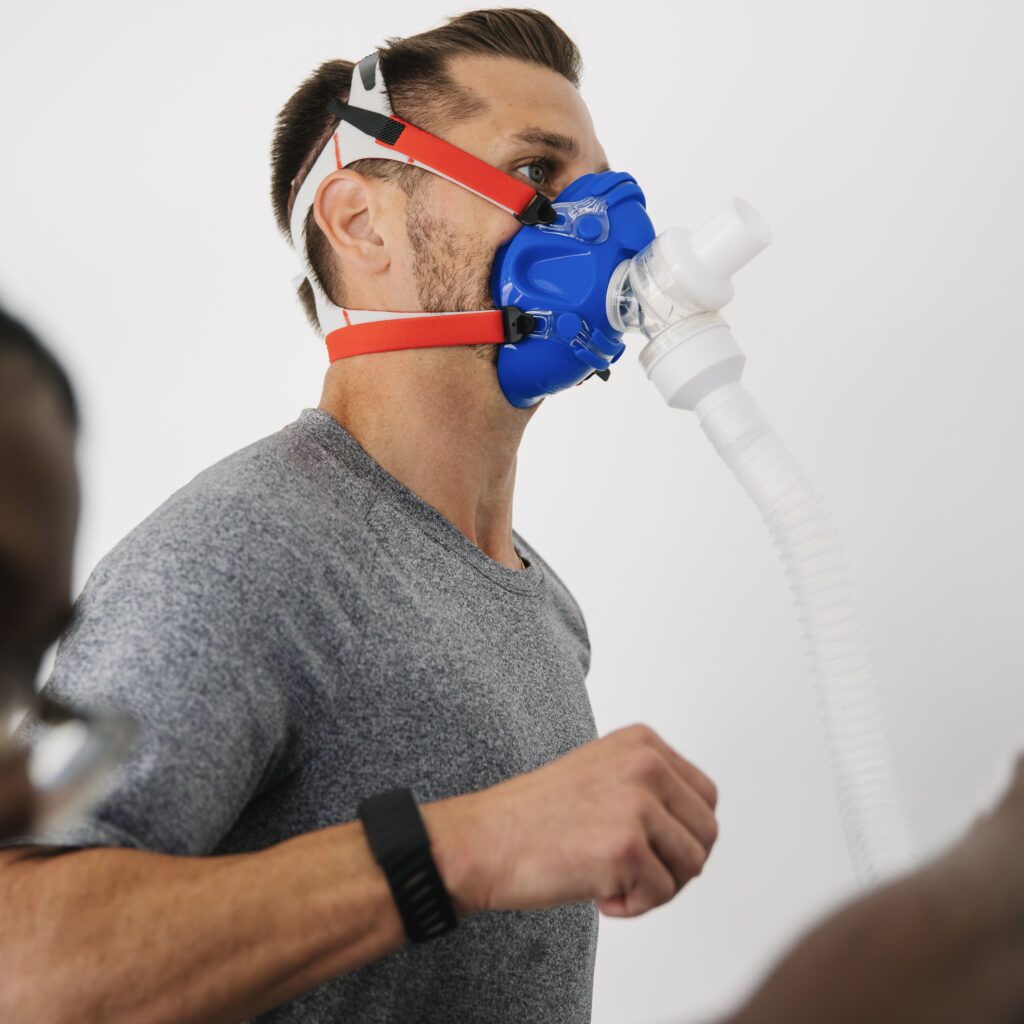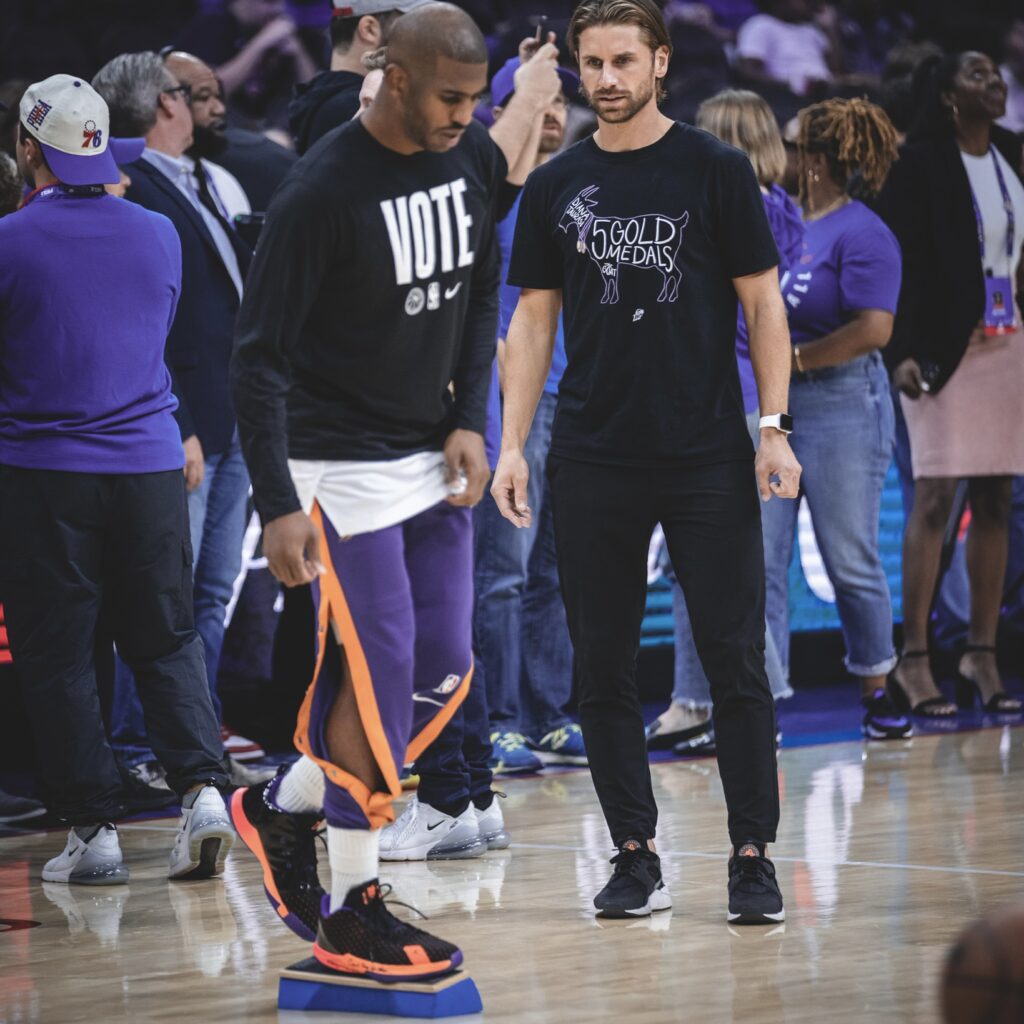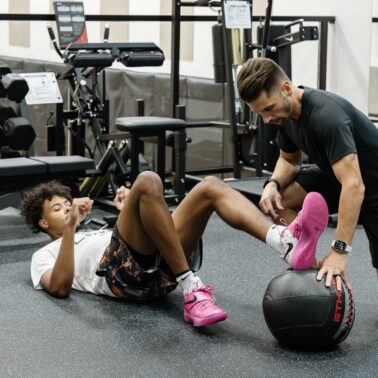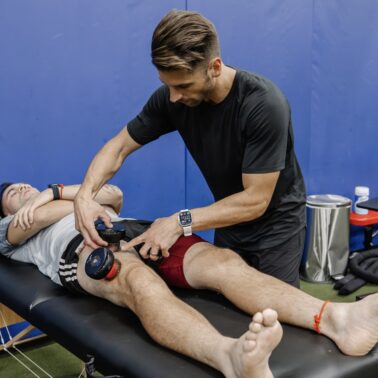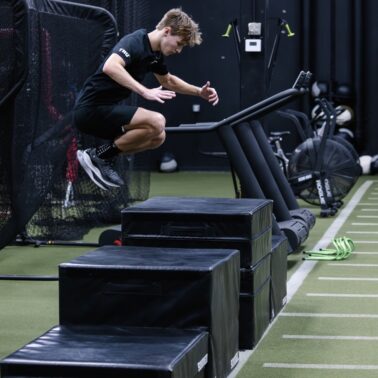Approximate Read Time: 9 minutes
“A higher VO₂max means that the fitter you are, the longer you live, the less injuries you have—and the better you perform.”
What You Will Learn
- How VO₂max reflects the body’s capacity to transport and use oxygen—the foundation of endurance, recovery, and resilience.
- The most accurate field-based tests to estimate VO₂max without expensive lab equipment.
- Why VO₂max is not just a fitness metric but one of the strongest predictors of longevity ever measured.
Physiological Foundation: What VO₂max Really Measures
VO₂max—short for maximal oxygen uptake—is the highest rate at which the body can consume oxygen during intense exercise. It represents the combined performance of the lungs, heart, blood, and muscles working together to extract, transport, and utilize oxygen.
In practical terms, VO₂max tells us how efficiently your body converts air into energy. A higher value means you can deliver and use more oxygen per minute of effort, allowing greater endurance, faster recovery, and better performance across nearly all physical tasks.
The variable is typically expressed in milliliters of oxygen per kilogram of body weight per minute (mL·kg⁻¹·min⁻¹). While elite endurance athletes often exceed 70–80 mL·kg⁻¹·min⁻¹, the average adult hovers around 35–45 mL·kg⁻¹·min⁻¹. In sports, this metric defines how long you can sustain high-intensity output. In medicine, suggests who will live longer.
Principles of Adaptation: Central and Peripheral Engines
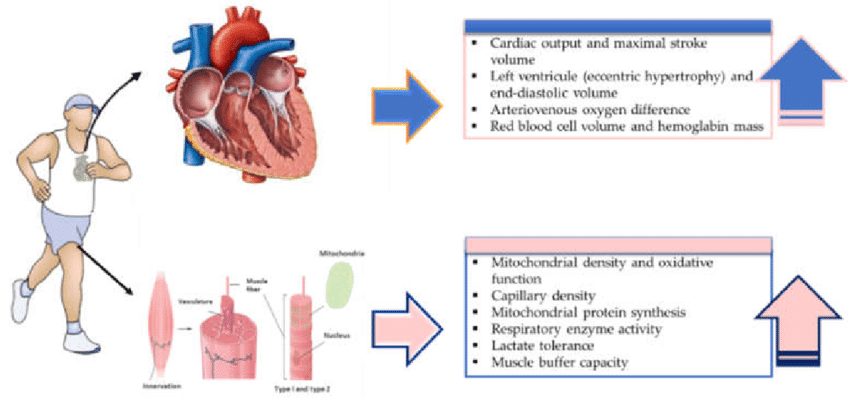
VO₂max depends on two primary systems—central and peripheral adaptations.
Central adaptations occur in the heart and lungs. Training increases stroke volume (the amount of blood ejected per beat), expands plasma volume, and enhances pulmonary diffusion. These upgrades improve oxygen delivery.
Peripheral adaptations happen in the muscles and microvasculature. Mitochondria proliferate, capillaries expand, and enzymes involved in oxidative metabolism become more efficient. The tissue learns to extract and use the oxygen the heart delivers.
Improving VO₂max, then, is not about lungs alone—it’s a systems upgrade. Every rep, sprint, or interval trains both delivery and utilization, expanding your biological capacity for work.
Key Training Variables
Three levers primarily influence VO₂max: intensity, duration, and frequency.
- Intensity: Near-maximal efforts—typically 85–95 % of heart-rate max—stimulate the greatest central adaptations.
- Duration: Sustained efforts of 2–5 minutes per interval (or 20–40 minutes continuous) best challenge oxygen transport.
- Frequency: Two to three targeted sessions per week are optimal for most athletes; more may risk overtraining without proportional gain.
Classic interval prescriptions such as 4 × 4 minutes at 90–95 % HRₘₐₓ with equal recovery periods have repeatedly demonstrated significant VO₂max gains in both recreational and elite populations.
Sport-Specific Expressions of VO₂max
Every sport demands a different relationship between oxygen and output.
- Soccer and Basketball: Athletes operate in intermittent bursts—rapid accelerations, decelerations, and repeat sprints. A high VO₂max allows faster recovery between these bursts, sustaining intensity across matches.
- Endurance Sports: Marathoners and cyclists live by this metric; small percentage improvements translate into measurable performance gains.
- Rehab and Return-to-Play: Following injury, VO₂max often declines due to inactivity. Rebuilding aerobic fitness restores tissue oxygenation, accelerates collagen synthesis, and supports total-body recovery.
For a deeper look at how conditioning ties into performance testing, explore Preseason Conditioning and the 360 Performance Profile.
Assessment Benchmarks: Lab and Field Testing
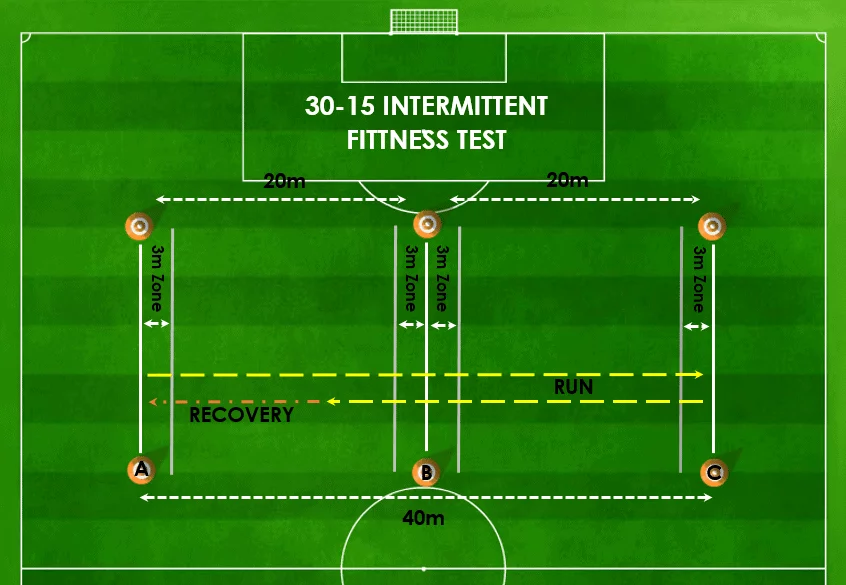
Laboratory metabolic carts remain the gold standard for direct VO₂max measurement, but field-based methods offer reliable and accessible estimates.
- 1.5-mile run and 12-minute run/walk tests show strong criterion validity (r ≈ 0.78–0.79; SEE ≈ 4.1–4.5 mL·kg⁻¹·min⁻¹).
- 20-m shuttle run (Beep test) demonstrates even higher correlation (r ≈ 0.87–0.92) across youth and adult groups.
- University of Montreal Track Test (UMTT) and Vam Eval tests achieve the highest accuracy for trained athletes (r ≈ 0.96; SEE ≈ 2.8 mL·kg⁻¹·min⁻¹).
- Submaximal walk or step tests (Rockport 1-mile, 2-km walk, 3-min step) are valid for older adults or clinical populations (r ≈ 0.73–0.84).
When selecting a test, context matters: choose a protocol aligned with the athlete’s sport and risk profile. Consistency of measurement is more important than the specific method.
Progression Strategies: Building the Aerobic Engine
VO₂max responds best to progressive overload—gradual exposure to increasing intensity, volume, or density. Start by building general aerobic capacity, then progress toward sport-specific conditioning.
A simple framework:
- Base Phase: Emphasize longer steady-state efforts at 60–75 % HRₘₐₓ to develop peripheral efficiency.
- Build Phase: Introduce structured intervals (e.g., 4 × 4 min or 6 × 3 min at 90–95 % HRₘₐₓ).
- Specific Phase: Integrate conditioning into tactical or skill drills (e.g., small-sided games, reactive sprints).
Common Errors
- Overemphasis on volume: Endless slow miles can plateau adaptation.
- Neglecting recovery: VO₂max training taxes both central and peripheral systems; under-recovery blunts gains.
- Ignoring individuality: Genetics, training age, and sport demands dictate response; one program does not fit all.
- Misreading wearable data: Wrist-based VO₂max estimates provide trends, not absolutes—use them as directional metrics, not diagnostics.
Transfer to Sport: From Data to Decision
The value of VO₂max lies not just in the number, but in what it reveals: capacity for repeat performance. In elite environments, this metric predicts who maintains output deepest into overtime and who fatigues when intensity spikes.
High aerobic capacity extends durability. It allows players to recover faster between sprints, withstand congested schedules, and adapt to chaotic game environments with fewer soft-tissue injuries. Studies in soccer and rugby consistently link higher aerobic fitness to lower incidence of non-contact injuries and reduced time-loss across seasons.
For applied examples of how teams leverage aerobic profiling within game design, listen to Dave Tenney – Tactical Periodization and the Science of Game Fitness.
VO₂max as a Lifespan Multiplier: The Longevity Connection
While VO₂max is the cornerstone of performance, its implications stretch far beyond sport. Research has established cardiorespiratory fitness as one of the most powerful predictors of all-cause mortality—stronger than smoking, diabetes, or coronary disease.
A landmark study by Mandsager et al. (2018) followed 122,007 adults over 8.4 years to evaluate the relationship between treadmill-measured fitness and mortality. Participants were stratified into performance percentiles: low, below average, above average, high, and elite. Results were striking:
- Mortality risk decreased in a graded, linear fashion with each rise in fitness.
- Individuals in the elite group (≥97.7th percentile, roughly 2 SD above mean VO₂max for age and sex) had an 80 % lower mortality risk than those in the lowest quartile (Mandsager et al., 2018).
- High VO₂max outperformed traditional clinical risk factors—smoking (HR 1.41), diabetes (HR 1.40), and coronary artery disease (HR 1.29)—as a predictor of survival.
- Importantly, no upper limit of benefit was observed; the fittest individuals lived longest, debunking the notion of a “U-shaped” risk curve.
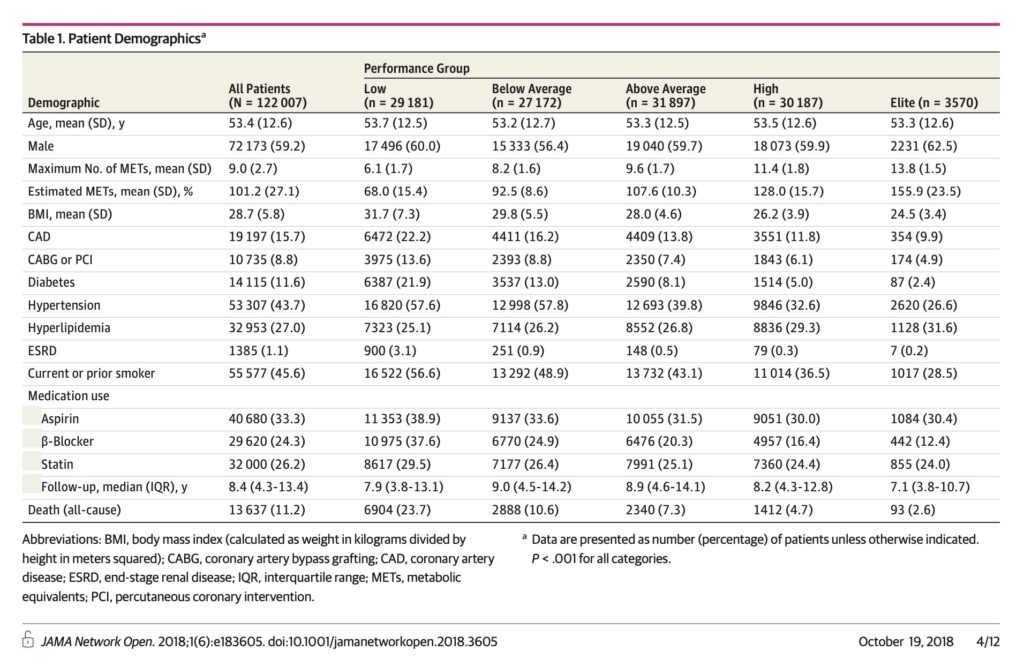
The study’s message was unequivocal: “Cardiorespiratory fitness is a modifiable indicator of long-term mortality, and health professionals should encourage patients to achieve and maintain high levels of fitness.”
In practical terms, VO₂max functions as a longevity biomarker. It reflects mitochondrial density, vascular elasticity, and metabolic efficiency—traits that decline with aging yet respond robustly to training. Each incremental gain in aerobic capacity equates to years of additional healthspan.
For older adults, the implications are profound. In those aged ≥70 years, elite fitness conferred a 29 % survival advantage even compared with the already-fit “high” group (Mandsager et al., 2018). The same held true for individuals with hypertension. These findings reinforce what performance therapy has long practiced: train for performance, and you train for life.
VO₂max therefore bridges two worlds—sport performance and preventive medicine. It is the metric that unites the locker room with the longevity clinic.
Integration with the 3P Framework
In my 3P Model—Principles, Process, Plans—VO₂max sits at the intersection of fitness and force management.
Principles:
Fitness is one of the ten foundational principles. The goal is not just aerobic endurance but the ability to fulfill a particular role or task. Enhancing VO₂max improves the body’s waste-removal systems, optimizes respiration patterns, and strengthens the foundation upon which intense performance demands are built.
Process:
Through Experimentation and Exposure, we use repeated test–retest cycles to find the optimal conditioning strategy for each athlete. Intervals, tempo runs, or small-sided games become safe-to-fail experiments. Progress is tracked not by guesswork but by measurable changes in oxygen efficiency and recovery.
Plans:
Every plan adapts to individual, task, and environmental constraints. For an NBA player in season, micro-dosed intervals maintain VO₂max without excess fatigue. For an off-season soccer athlete, high-density blocks may deliberately push the aerobic ceiling. The key is to amplify desirable adaptations—greater oxygen transport, improved recovery—and dampen undesirable ones like excessive fatigue or interference with power output.
To see how these concepts shape long-term adaptation, explore Residual Training Effects: How Long Training Programs Last.
VO₂max Summary and Takeaways
- VO₂max is the body’s measure of oxygen transport and utilization—the engine behind endurance, recovery, and resilience.
- Both central (cardiac) and peripheral (muscular) adaptations drive improvement.
- Field-based tests like the 1.5-mile, 12-min run, and 20-m shuttle provide valid, accessible assessments.
- Training should progress from general to specific, layering volume, intensity, and density intelligently.
- High VO₂max not only enhances sport performance but extends life expectancy, with no upper limit of benefit.
- Within the 3P Framework, VO₂max reflects the harmony between movement, force, and fitness—Principles in action, Process in motion, and Plans with purpose.
5 Principles for VO₂max Training
- Train for Life: Each aerobic gain is both a performance advantage and a longevity investment.
- Expose Gradually: Apply progressive overload; slow when you can, fast when you must.
- Measure Relentlessly: Test and re-test VO₂max or MAS every 6–8 weeks.
- Balance Central and Peripheral: Mix high-intensity intervals with sustained efforts.
- Respect Context: Align conditioning with sport demands and season phase.
Free Download
Read More Like This
Related Podcasts
References
- Mandsager K, Harb S, Cremer P, et al. Association of Cardiorespiratory Fitness With Long-term Mortality Among Adults Undergoing Exercise Treadmill Testing. JAMA Network Open. 2018;1(6):e183605.
- Rowley T, Cho C, Swartz A, Cho Y, Strath S. Validation of a series of walking and stepping tests to predict maximal oxygen consumption in adults aged 18–79 years. PLoS ONE. 2022;17:e0264110.
- Mayorga-Vega D, Bocanegra-Parrilla R, Ornelas M, Viciana J. Criterion-Related Validity of the Distance- and Time-Based Walk/Run Field Tests for Estimating Cardiorespiratory Fitness: A Systematic Review and Meta-Analysis. PLoS ONE. 2016;11:e0151671.
- Bok D, Foster C. Applicability of Field Aerobic Fitness Tests in Soccer: Which One to Choose? J Funct Morphol Kinesiol. 2021;6:3069.
- Paradisis G, Zacharogiannis E, Mandila D, et al. Multi-Stage 20-m Shuttle Run Fitness Test, Maximal Oxygen Uptake and Velocity at Maximal Oxygen Uptake. J Hum Kinet. 2014;41:81–87.
